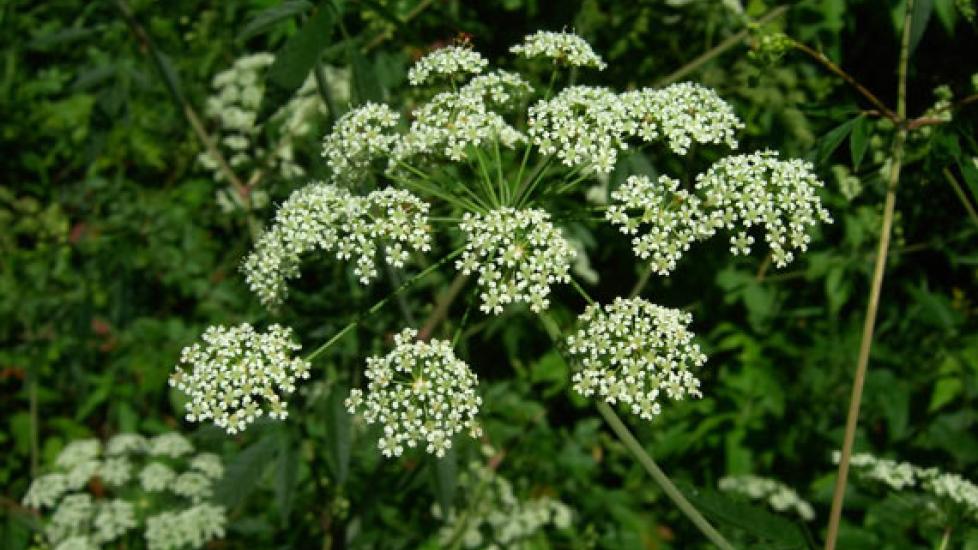'Violently Toxic' Plant to Blame for Colorado Dog's Sudden Death
We had a weird (and tragic) case of water hemlock poisoning here in Colorado recently. A three-year-old border collie mix was out for a walk around a local reservoir with her people and began “playfully chewing” on a plant, according to Dr. Dawn Duval, Department of Clinical Sciences associate professor at Colorado State University. Within the hour, the dog was dead.
What’s unusual about this case is not the fact that the patient died. The U.S. Department of Agriculture (USDA) describes water hemlock (Cicuta douglasii) as “the most violently toxic plant that grows in North America.” But water hemlock poisoning almost always occurs in grazing animals — cattle, horses, etc. This is the first time I’ve ever heard of a dog dying from water hemlock poisoning.
Water hemlock contains cicutoxin, tiny amounts of which can have a dramatic, negative effect on the nervous system of animals (including people). All parts of the water hemlock plant are poisonous, but the highest levels of cicutoxin are found in the roots.
According to the USDA, “The thick rootstalk of the water hemlock contains a number of small chambers. These hold a highly poisonous brown or straw-colored liquid that is released when the stem is broken or cut.” Cicutoxin has a “strong carrot-like odor,” which isn’t too surprising since the plant is a member of the carrot family.
Victims of water hemlock poisoning develop clinical signs within minutes to a few hours of ingestion, and death can occur between 15 minutes and 2 hours after clinical signs appear.
Symptoms of water hemlock poisoning include:
- Nervousness
- Drooling
- Muscle twitching
- Dilated pupils
- Rapid breathing and heart rate
- Tremors
- Seizures
- Coma
Most deaths from water hemlock poisoning occur as a result of uncontrolled seizures that prevent the animal’s heart and lungs from functioning adequately. Treatment can be effective if instituted quickly enough and consists of:
- Preventing absorption of more cicutoxin by inducing vomiting, gastric lavage (placing a tube into the stomach and washing it out), and administering activated charcoal
- Giving anti-seizure medications
- Putting the animal on oxygen and if necessary, starting artificial respiration
Now, water hemlock poisoning is not something that dog owners need to be overly concerned about. The plant is only found in wet areas within the western part of the United States and is generally not something a dog would seek out to eat. However, I thought this case was an important illustration as to why we all need to “expect the unexpected” when out with our dogs.
There is no way to protect against every contingency, but walking dogs on a short leash, keeping an eye on what they are doing, and teaching them the command “drop” does save lives.

Dr. Jennifer Coates
Sources
Dog eat poisonous plant, dies suddenly. Chris Jose. Fox 31 Denver. Accessed 7/7/15.
Pacific West Area Home / Poisonous Plant Research / Main / Water hemlock (Cicuta douglasii). USDA. Accessed 7/7/15.
Image: Water Hemlock Flowers, by Wendell Smith / Flickr
